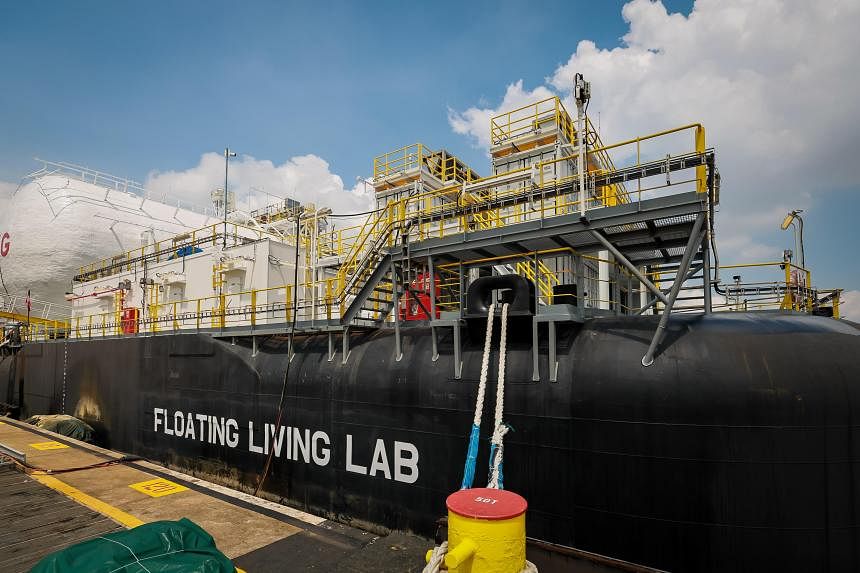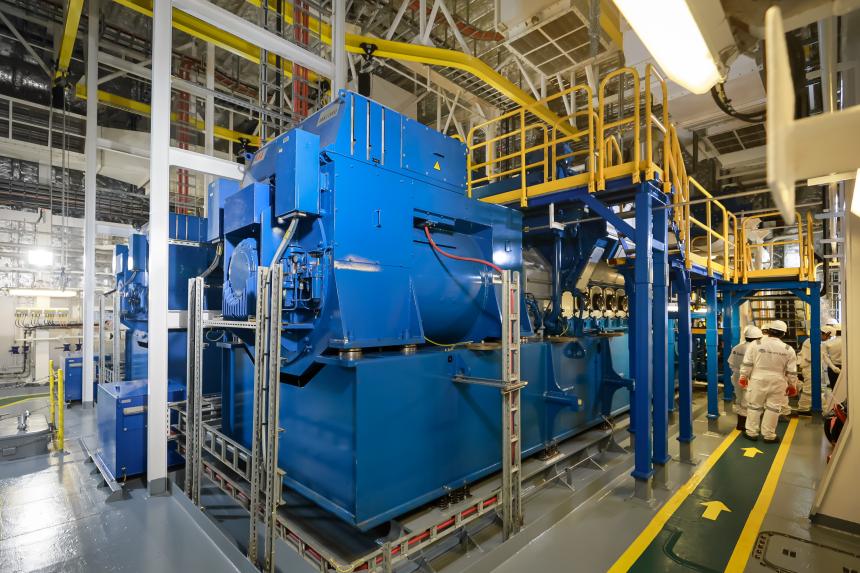SINGAPORE - A first-of-its-kind floating power plant with batteries that can refuel liquefied natural gas (LNG) vessels, charge electric harbour craft and even generate electricity for remote islands is set to start operations in the first quarter of 2024.
The Floating Living Lab, developed on a floating platform by offshore and marine company Seatrium at its Pioneer Yard, is Singapore’s first energy storage system (ESS) on water, and could provide a future answer to a small island’s needs for energy storage from renewable sources.
The project was awarded to a consortium led by Univers, formerly known as Envision Digital International.
It is part of a $10 million partnership between the Energy Market Authority (EMA) and Seatrium to develop innovative energy solutions in the marine sector, and was announced in April 2020.
The floating lab uses an innovative battery stacking solution that reduces its footprint by 40 per cent, which could in the future be used to overcome Singapore’s land constraints in supporting the power grid.
It has a maximum storage capacity of 7.5 megawatt hours (MWh) and can meet the electricity needs of more than 600 four-room HDB households for a day in a single discharge.
The energy storage system is integrated with a smart energy management system that uses artificial intelligence and machine learning algorithms to enhance its efficiency in operations and energy distribution.
The floating lab shows what is possible, as Singapore moves from a highly centralised energy sector anchored by large power plants to a more dispersed system marked by regional renewable power sources, said a Seatrium spokesman.
Energy storage systems are necessary as the country moves to decarbonise its power sector for renewable sources such as solar power, which is weather-dependent.
Excess power generated during periods of peak production can be stored for use at other times.
Typical energy storage systems are on land. An example of such a system is a Sembcorp facility spanning 2ha of land on Jurong Island that was opened in February.
Other assets on the floating system include LNG bunkering facilities for harbour craft and small vessels, and test infrastructure for charging fully electric vessels.
Seatrium can also use it to work with partners on developing other innovative technology, such as low or no-carbon fuels for ships and electrification of harbour vessels.
On the project, chief executive of EMA Ngiam Shih Chun said: “Given Singapore’s limited land area, we need innovative solutions for our energy infrastructure such as Seatrium’s floating solution for energy storage.”
Chief executive of Seatrium Chris Ong said the company is proud to be developing innovative energy solutions in the offshore, marine and energy industries.
“The deployment of Singapore’s first floating and stacked energy storage system at Seatrium’s floating living lab is testament to our commitment towards leveraging technology and innovation to optimise energy efficiency and reduce our operational footprint,” he said.







